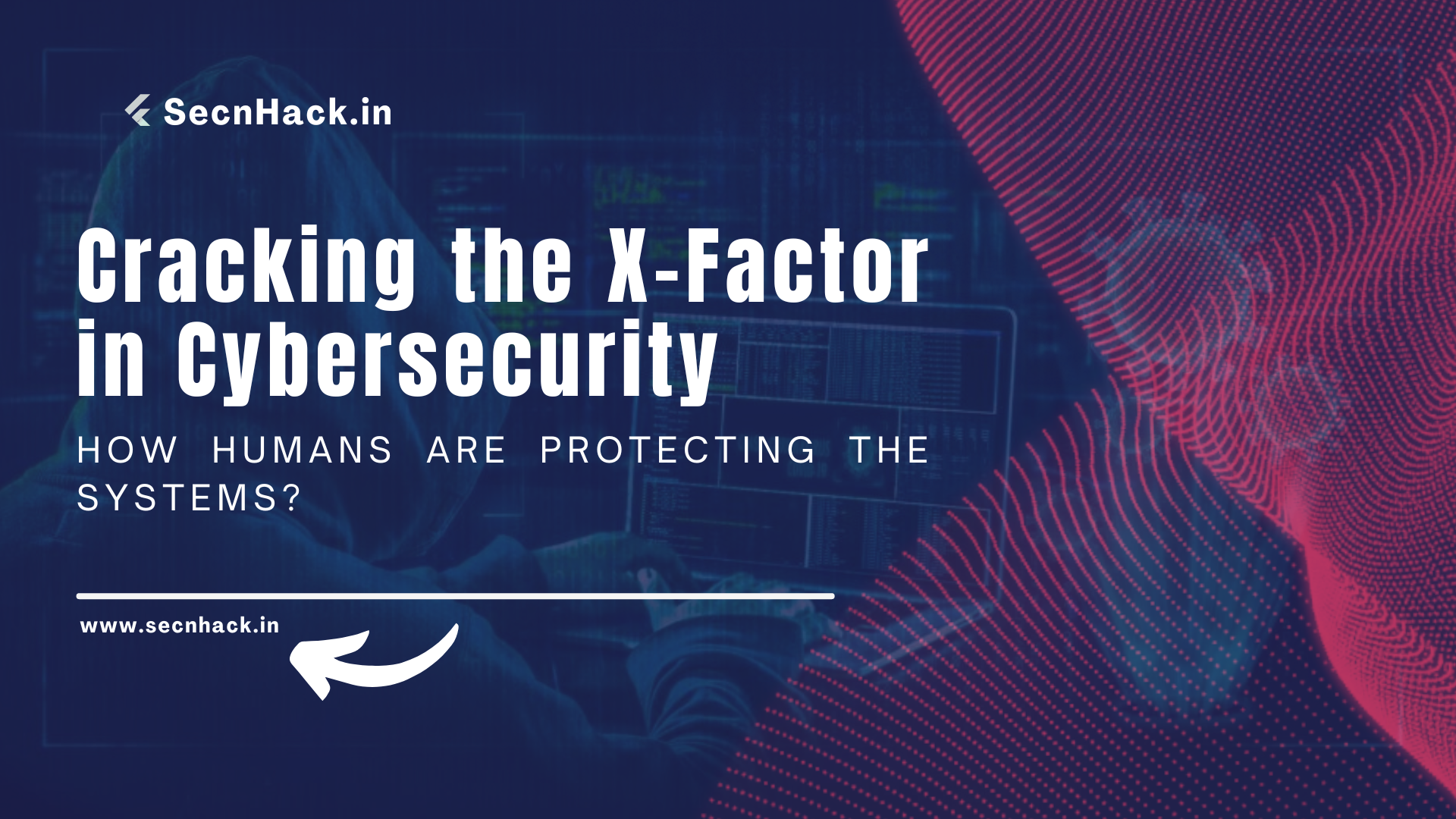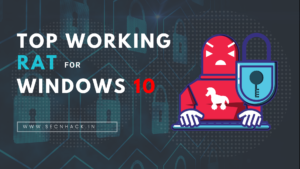
Amid the rapid advancement of technology, the significance of human involvement in cybersecurity frequently goes unnoticed. As conversations predominantly revolve around sophisticated algorithms and state-of-the-art tools, the critical contribution of humans can quickly be overshadowed. While technology continues to evolve, it’s imperative to recognize that humans play an essential role beyond automation and digital processes.
This article elaborates on the often-underestimated X-factor of cybersecurity: the intricate interplay between human expertise and technological solutions and how this synergy forms a robust shield against ever-evolving cyber threats.
Let’s take a look into this 🙂 !!
Understanding the Human Element in Cybersecurity
The digital battleground of cybersecurity is one where human decisions and actions are as vital as technology. Humans are not just passive subjects of cybersecurity; they learn from cybersecurity courses and are the architects, operators, and decision-makers who wield profound influence over the security of systems. The human element is omnipresent, from the individual user’s behavior to the cybersecurity professionals responsible for devising strategies. The human factor determines whether an employee falls prey to a phishing email or recognizes it as a potential threat. This factor extends far beyond reactive measures; it encompasses proactive approaches such as building resilient passwords, identifying suspicious activities, and adhering to security protocols.
Human-Centric Threat Detection and Prevention
Leveraging human intuition and expertise becomes a powerful tool within the cybersecurity arsenal. Educational initiatives and awareness programs lay the groundwork for what can be termed a “human firewall.” These efforts cultivate a heightened consciousness among individuals about the dynamic tactics employed by cybercriminals. Individuals assume a frontline role in thwarting cyber threats by delving into the intricacies of phishing attacks, recognizing red flags indicating malware, and embracing secure online practices. When fortified with knowledge, the human element can discern subtleties that automated systems may miss. This aptitude to gauge context and intent empowers individuals to identify potential dangers that might appear innocuous to machines. Empowering individuals with cybersecurity understanding involves building a more robust line of defense and fostering a culture of collective security. Through ongoing education, individuals grasp the nuances of social engineering strategies, hone their skepticism, and bolster their capacity to identify fraudulent activities. The collaborative efforts of cybersecurity professionals and educated individuals establish an ecosystem where human instinct becomes a proactive shield against cyberattacks. In this realm, human expertise enhances the capacity to make nuanced judgments, making the difference between falling victim to cyber threats and staying one step ahead of potential risks.
Social Engineering and the Art of Deception
In the intricate realm of cyber warfare, social engineering emerges as one of the most potent tools in the cybercriminal arsenal. This strategy hinges on exploiting the human element to access sensitive data illicitly. Tactics like phishing emails, pretexting, and baiting capitalize on human emotions, curiosities, and vulnerabilities, creating openings for attackers. While human susceptibility might be perceived as a weakness, it’s, paradoxically, a pillar of strength in cybersecurity. Educating individuals to identify these tactics, critically assess suspicious communications, and embrace a cautious mindset constructs a formidable defense against social engineering assaults. By enhancing awareness of the psychological strategies employed by attackers, individuals can forge a cognitive shield that proves challenging for cybercriminals to breach.
The power of human intuition is harnessed through a comprehensive cybersecurity course that instills a proactive stance against social engineering. Organizations can foster a collective sense of vigilance by cultivating a climate where individuals are well-versed in the methods of manipulation. This collective awareness doesn’t just stem from recognizing external threats but also from honing the ability to question and validate internal communications. This multifaceted approach becomes a cornerstone of the defense, where the human element emerges as a safeguard against the subtleties of social engineering, fortifying the organization’s security posture and reducing susceptibility to manipulative cyber tactics.
Collaboration and Communication as Defense Mechanisms
One of the most significant challenges in cybersecurity is the rapidly evolving nature of threats. Here, the human element again assumes a central role in the form of collaboration and communication. Cybersecurity is not a one-person endeavor; it thrives on coordinated efforts. Effective defense mechanisms hinge on the collective intelligence of cybersecurity teams, where human expertise acts as a force multiplier. Effective communication within these teams is vital for sharing threat intelligence, brainstorming solutions, and implementing strategies that adapt to the shifting threat landscape. The human factor in cybersecurity is a binding agent, uniting professionals in pursuing robust digital defense.
Crisis Management and Incident Response
Amidst the tumultuous aftermath of a cybersecurity breach, the human response becomes the linchpin that shapes the outcome’s magnitude and the pace of recovery. Armed with the prowess of human intelligence, incident response teams stand on the front lines of crisis management. These skilled professionals are pivotal in evaluating the breach’s scope, curbing its propagation, and orchestrating a well-coordinated recovery. The preparedness and training of these teams often determine whether a situation is merely a minor hiccup or a full-blown catastrophic data breach. Within this dynamic, the human element shines through with its capacity for swift decision-making, the rapid application of protocols, and the adeptness to navigate unforeseen challenges.
The human factor is the driving force in the face of uncertainty, enabling incident response teams to function under intense pressure. Their ability to swiftly assess and classify the severity of the breach directs subsequent actions, allowing a more targeted and effective response. In the tumultuous landscape of cybersecurity crisis management, the human element serves as a guiding light, steering the course towards containment and recovery. The interplay between human expertise, experience, and adaptability emerges as a critical factor in minimizing damage, ensuring resilience, and ultimately safeguarding the organization’s digital assets.
The Future of Cybersecurity: Humans and Technology
As the realm of cybersecurity hurtles forward, the dynamic between humans and technology is poised to redefine the landscape. While artificial intelligence and machine learning empower automated defense mechanisms, the human factor remains irreplaceable. The synergy between human intuition, ethical judgment, and technology’s analytical capabilities is the cornerstone of future cybersecurity strategies. Humans inject context, empathy, and critical thinking into the security equation, enhancing threat detection and response precision.
Empowering Individuals as Cyber Defenders
Amidst the discussions of sophisticated technologies and complex strategies, it’s essential not to overlook the individual’s role in cybersecurity. Empowering individuals as cyber defenders holds the potential to ripple across the digital landscape. Encouraging employees, students, and individuals to adopt cybersecurity best practices can collectively create a resilient digital environment. From employing strong passwords and enabling two-factor authentication to keeping software up to date, these actions contribute to the shared responsibility of securing the digital realm.
Conclusion
In cybersecurity, the human element remains unchanging in the evolving digital landscape. This X-factor, composed of expertise, intuition, and adaptability, is the linchpin that fortifies systems and data against ever-advancing threats. While technology plays a pivotal role, human understanding, vigilance, and collaboration elevate cybersecurity to its highest potential. In recognizing and harnessing the power of humans in safeguarding our digital future, we lay the foundation for a more secure and resilient cyber vertical. It’s a reminder that while technology may dazzle with its capabilities, the human touch remains the ultimate guardian of our digital realm.




